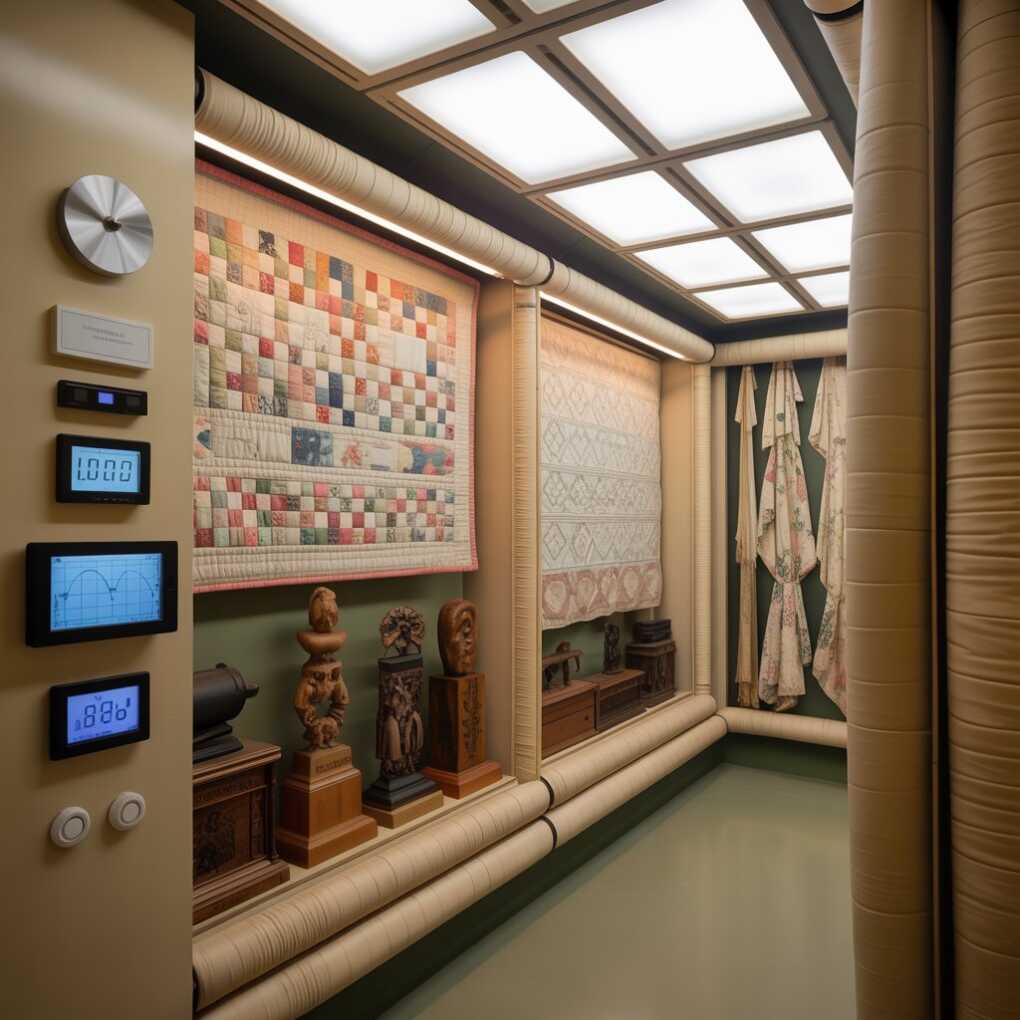Textiles and wood are both historic, attractive, and valuable materials. From family quilts and antique clothing to furniture and wood heirlooms, these items warrant special treatment to last for years to come. The problem is that both textiles and wood are environmentally sensitive. Exposure to moisture can lead to mold or warpage, while dryness can fortify fibers or cause wood to crack. Keeping them in a climate controlled room offers a constant environment in which temperature and humidity are kept stable. This prevents deterioration of materials and common damages. By selecting proper conditions and embracing simple preservation techniques, you can help ensure that cherished items remain robust, clean, and ready to pass down to future generations. In this article, we examine why preservation is important, why improper storage can pose serious threats, how climate control can safeguard these materials, and proper ways to care for textiles and wood.

Why preservation matters
Preservation is necessary because textiles and wood are extremely sensitive to changes in their environment. A quilt made by hand can fade and become weak when it is exposed to light or moisture, and wood furniture can swell or crack depending on moisture content. Unlike metal or plastic, these natural textiles rapidly deteriorate when not preserved appropriately. Many collectors and families retain pieces that hold cultural or personal importance, for which further preservation is necessary. Without appropriate care, once-meaningful family heirlooms or antique pieces can deteriorate further and become worthless, losing their beauty and meaning. Preservation of these pieces is about more than placement—it is preserving history and craftsmanship that these pieces embody. When textiles and wood are preserved appropriately, they can remain functional, aesthetically pleasing, and significant for years to come. Establishing a safe space ensures that future generations can enjoy their beauty and value, be it a piece of simple furniture or a family treasure that is precious to you.
Risks of poor storage
Improper storage is one of the biggest threats to textiles and wood. Keeping them in basements, attics, or damp garages exposes them to conditions that cause long-term harm. Fabrics may become discolored or brittle, while wooden items risk mold, splitting, or insect damage. These problems often go unnoticed until it is too late, making preventive care essential.
Market list of common risks:
- Mold and mildew spreading in damp air
- Cracks and splits from extreme dryness
- Fading colors from direct sunlight
- Insect damage from unprotected areas
With thoughtful solutions like for New Jersey living that flows, choose NSA Storage, you can ensure both textiles and wood are given the right environment to stay safe, beautiful, and functional.
Role of climate management
Most people wonder how climate controlled rooms assist in preserving textiles and wood. The following are a few concise explanations for common queries.
What is the ideal temperature for textile and wood storage?
A stable, moderate temperature like that of a cozy house is ideal. Heat or cold extremes can loosen fabric fibers and cause wood to contract or expand.
What is its role protecting these goods?
Evenly balanced humidity prevents clothes from becoming musty and moldy and from causing wood to crack or warp. A humidity level of 35 to 50 percent is most ideal.
Do climate controlled rooms actually help?
Yes, they produce stable conditions that shield materials from environmental stress. Such rooms do not allow for temperature and moisture fluctuations to bring their destructive cycle into play like attics or basements do.
By managing both temperature and humidity, these spaces provide the best chance for textiles and wood to remain strong, attractive, and usable for many years.
Best practices for textiles
Caring for textiles does not need to be complicated. A few simple habits can help keep them in excellent condition when stored in climate managed rooms.
- Store fabrics in breathable cotton bags instead of plastic
- Fold quilts and blankets loosely to avoid permanent creases
- Keep items off the floor to reduce dust and moisture risk
- Rotate stored clothing or linens occasionally
- Label storage boxes for easier access
These easy steps add an extra layer of protection. With a thoughtful approach, your textiles will stay fresh, clean, and ready to use whenever you need them.
Protecting wood items
A Midwestern family described how climate controlled storage preserved their wooden family heirlooms. Their household included a handmade dining table and a number of antique chairs that had been passed down from family to family. For years, their furniture had sat in their basement, where moisture and changing temperature took their toll little by little. Tiny cracks developed in the legs of the table, and splotches of mold began to show up on chairs. Wary of irreversible harm, they transferred their furniture to a climate controlled room.
Within several months, you would begin to notice a difference. The wood no longer showed stress, and the growth of mold was inhibited. The stable environment enabled furniture to remain strong and aesthetically pleasing, ensuring it would be used and enjoyed for a long period of time.
Wood-keeping families who store articles in climate-controlled rooms reduce eventual deterioration by more than 65 percent
This is a case that reveals how subtle variations in storage choices can save precious belongings. With climate management, families do not just save their valuables but also their heritage.
Final thoughts
Textiles and wood are worthy of the same level of attention that you would give to a cherished object. By selecting climate controlled rooms, you establish a safe space that prohibits mold, cracking, or fading while maintaining access to items. This considerate step ensures that heirlooms and daily items stay with you for years to come. Storing textiles and wood in climate controlled rooms is more than good sense—it is preserving history and ensuring beauty endures for generations to come.
